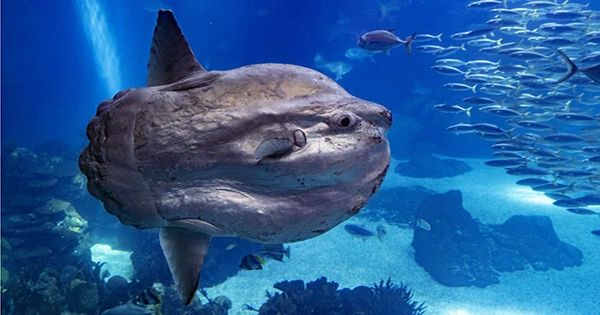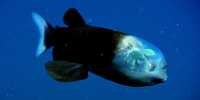The adage “great oaks from little acorns grow” is particularly applicable to the life cycle of enormous molas. These magnificent fish develop to enormous sizes after beginning their life as marine popcorn. With a massive 2,744 kilograms, one specimen has already passed another to hold the title of the largest bony fish in the world (6,050 pounds).
Molas, also known as ocean sunfishes, is thought to be the heaviest extant bony fishes and can grow to a length of more than 3 meters (almost 10 feet). Ocean sunfish (Mola mola), enormous sunfish (Mola alexandrini), and hoodwinker sunfish are the three species (Mola tecta). They spend their entire lives swimming back and forth between the deep ocean and the water’s surface, where they can be seen basking side up to warm up and receive parasiticide treatment from gulls.
A dead giant sunfish was discovered drifting in the vicinity of Faial Island off Horta Harbor in the Portuguese archipelago of the Azores in December 2021. The Azores marine strandings network (Rede de Arrojamentos de Cetáceos dos Açores) hoisted the entire unit onboard and used a forklift truck to weigh it back on land.
It was weighed in at 2,744 kilos and measured 3.59 meters in length, making it the heaviest bony fish ever recorded.
“The M. The researchers that made the finding noted, “Alexandrini presented here is the biggest extant teleost specimen reported to date. “It exceeds by over half a ton (444 kg [979 pounds]) the largest known species, which was taken off Kamogawa, Japan, in 1996, weighing 2300 kg (5,070 pounds… Massive sunfish M. Thus, alexandrini can weigh up to two times as much as its congeneric, the ocean sunfish M. Mola (heaviest record: 2,910 pounds at 1320 kg).
The cause of the ocean giant’s demise remains unknown, according to specialists working on the finding. It seems apparent that the animal was struck by the keel of a boat at some point, but it is unclear whether this occurred before or after the animal was put down.
The team intends to keep studying the specimen to see what new information it can provide about this uncommon, elusive, and – obviously – record-breakingly large species. Please feast your eyes upon it in all its lovely popcorn-like wonder for those who have not yet been graced with the sight of enormous sunfish larvae. And if that weren’t adorable enough, these oceanic slabs also exhibit zoomies during their early development.
















